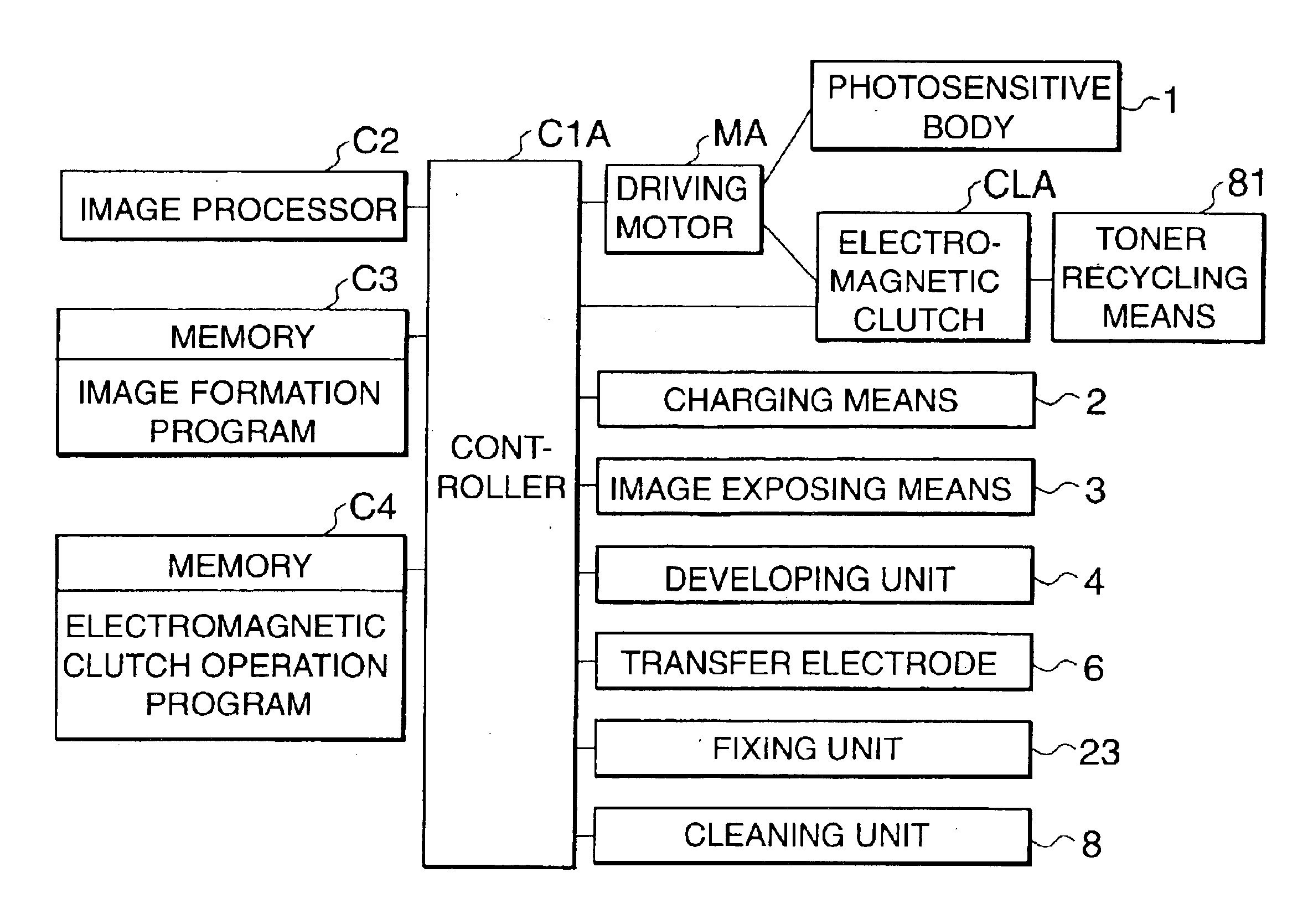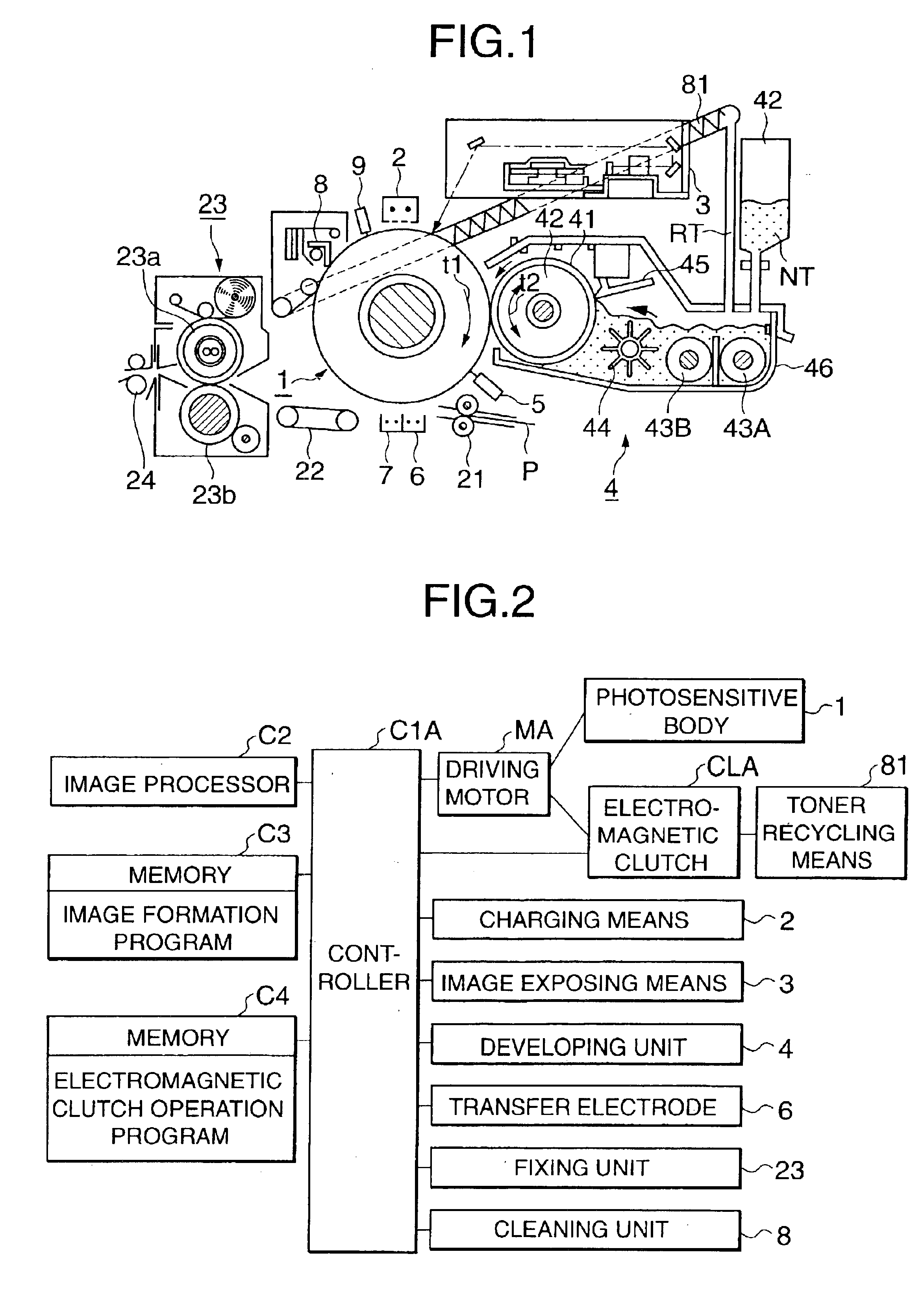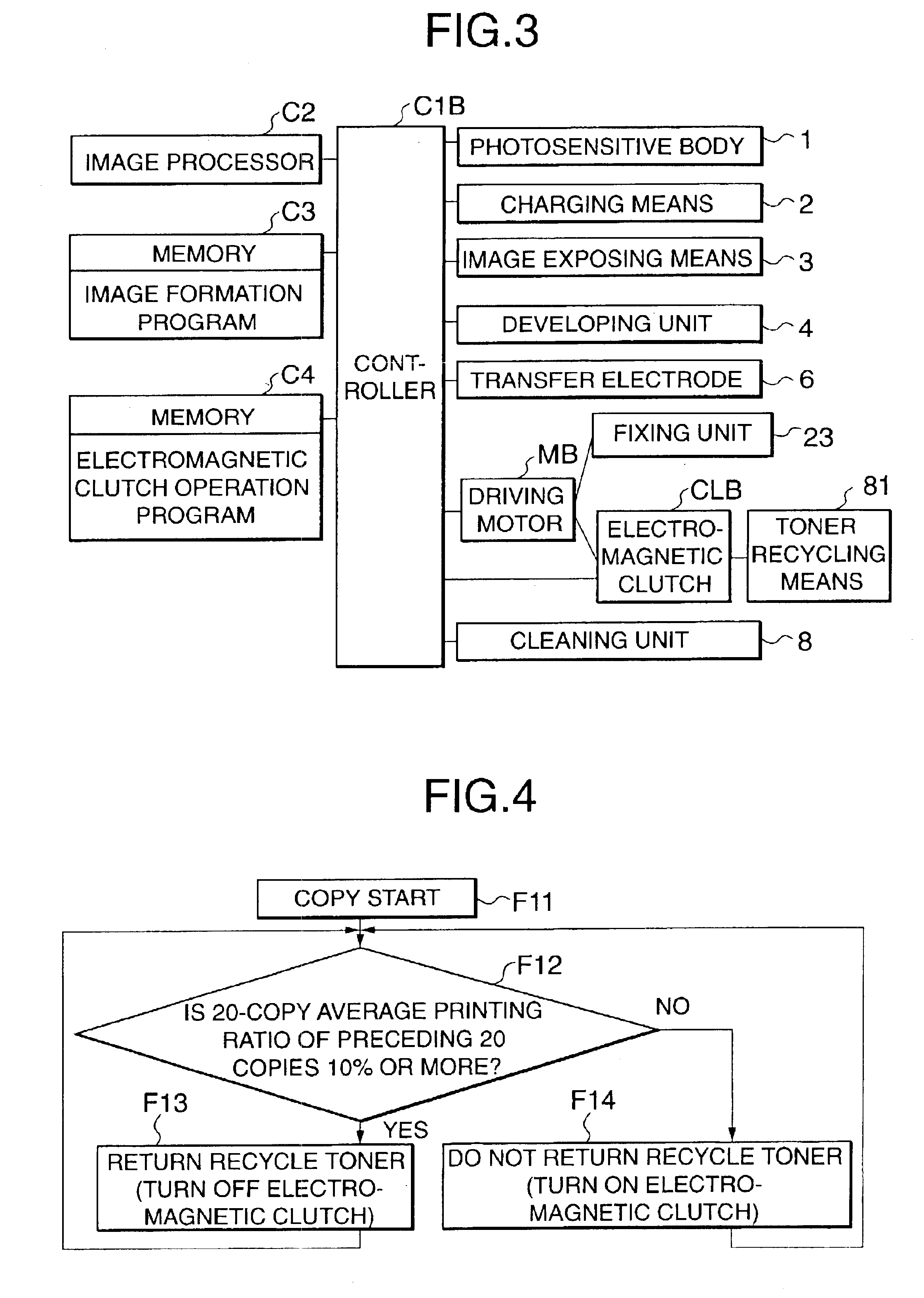Image forming apparatus and convey control method for recycle toner
a technology of conveying control and toner, which is applied in the field of image forming apparatus, can solve the problems of hard mixing with the carrier, degrading electrostatic properties, and posing a problem, and achieve the effect of no degradation of image quality
- Summary
- Abstract
- Description
- Claims
- Application Information
AI Technical Summary
Benefits of technology
Problems solved by technology
Method used
Image
Examples
operation example 1
[0056]According to convey control for the recycle toner to be described in operation example 1, control operation is performed to suppress the return amount of the recycle toner when the printing ratio of the image pattern is low. FIG. 4 shows a flow chart of this control.
[0057]In an image processor C2, when image data is to be subjected to image processes such as tone correction, the printing ratio of an image pattern: per image is measured and is stored in the memory.
[0058]When copying is started (F11), the controller C1A (C1B) calculates a 20-copy average printing ratio of preceding 20 copies stored in the memory, and checks whether the obtained average printing ratio is 10% (as a low printing ratio) or more (F12).
[0059]If the average printing ratio of the 20 copies is 10% or more, the electromagnetic clutch CLA (CLB) maintains OFF, and transmits the driving force to return the recycle toner to the developing unit 4 (F13).
[0060]If the average printing ratio of the 20 copies is le...
operation example 2
[0062]In the flow of operation example 1, when the space in the cleaning unit 8 for storing the recovery toner recovered by the cleaning means is small, the recovery toner which is not conveyed but left may fill the cleaning unit 8 to overflow. Hence, when an image pattern with a high printing ratio with which a large amount of recovery toner may be produced is to be output, the electromagnetic clutch CLA (CLB) is controlled to perform recycling in combination with the flow of operation example 1. This is operation example 2. FIG. 5 shows a flow chart of this control.
[0063]In the image processor C2, when an image data process is to be performed, the printing ratio of an image pattern per image is measured and is stored in the memory.
[0064]When copying is started (F21), the controller C1A (C1B) calculates a 20-copy average printing ratio of preceding 20 copies stored in the memory, and checks whether the obtained printing ratio is 10% (as a low printing ratio) or more (F22).
[0065]If ...
operation example 3
[0070]When the image forming apparatus resumes operation after it has been stopped for a long period of time, an inconvenience such as fogging or character thickening tends to occur in the print image while several hundred copies are output. According to operation example 3, the amount of recycle toner to be returned to the developing unit 4 is controlled while the several hundred copies are output after the long-time stop. FIG. 6 shows a flow chart of this control.
[0071]The fixing unit 23 has a temperature sensor for measuring the temperature of the fixing unit 23. When the power supply is turned on (F31), the controller C1A (C1B) checks whether the fixing unit temperature detected by the temperature sensor is 50° C. or more (F32).
[0072]If the fixing unit temperature is 50° C. or more, that is, if the stop time since the last copy is output is not very long, the electromagnetic clutch CLA (CLB) is turned off to transmit the driving force, and the recycle toner is returned to the de...
PUM
 Login to View More
Login to View More Abstract
Description
Claims
Application Information
 Login to View More
Login to View More - R&D
- Intellectual Property
- Life Sciences
- Materials
- Tech Scout
- Unparalleled Data Quality
- Higher Quality Content
- 60% Fewer Hallucinations
Browse by: Latest US Patents, China's latest patents, Technical Efficacy Thesaurus, Application Domain, Technology Topic, Popular Technical Reports.
© 2025 PatSnap. All rights reserved.Legal|Privacy policy|Modern Slavery Act Transparency Statement|Sitemap|About US| Contact US: help@patsnap.com



